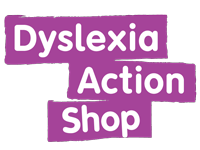This website uses cookies to ensure you get the best experience on our website. About consent.
TIPS - Test of Information Processing Skills, Product Range
Required qualifications
Assessment Qualification at Level 7 e.g. CPT3Aor CCET Level 7
or Psychologist, SaLT or OT
or SENCO
or Dyslexia Action PGCert /PGDip
TIPS- Test of Information Processing Skills
Age: 5 through to 90+ yrs
Although TIPS had its genesis in the Learning Efficiency Test (R. Webster, 1981, 1992, and 1998), it features new items, new subtests (Delayed Recall and Word Fluency), new scoring procedures, and new national norms (N=3,314).
|
TIPS Performance Relates to:
|
TIPS Assesses:
|
Short-term and working memory responses show differences between sequenced and non-sequenced retention (a hallmark of those with learning difficulties).
Error analyses (Proactive Inhibition and Auditory Intrusion) document the extent to which new information is lost or its retention is inhibited.
Administration and Scoring
The TIPS can be administered in about 20-25 minutes. Processing is assessed in two modalities (Visual and Auditory) and three recall conditions using strings of two to nine non-rhyming letters. Sequential and non-sequential scores are obtained; standard scores and percentile ranks are provided.
TIPS Subtests
Visual and Auditory Modality
- Letter Strings are presented and the letters are recalled immediately, then recalled after an interference task (counting), then recalled again after a longer interference task (repeating a sentence)
- scores differentiate letters recalled in the exact sequence as presented as well as for letters recalled out of sequence;
- Error analysis provide measures of Acoustic Intrusion and Proactive Interference effects.
Delayed Recall Subtest
- animal or fruits from the interference sentences are recalled;
Semantic Fluency Subtest
- word lists are generated orally within one-minute spans,
- word lists are written within one-minute spans.


